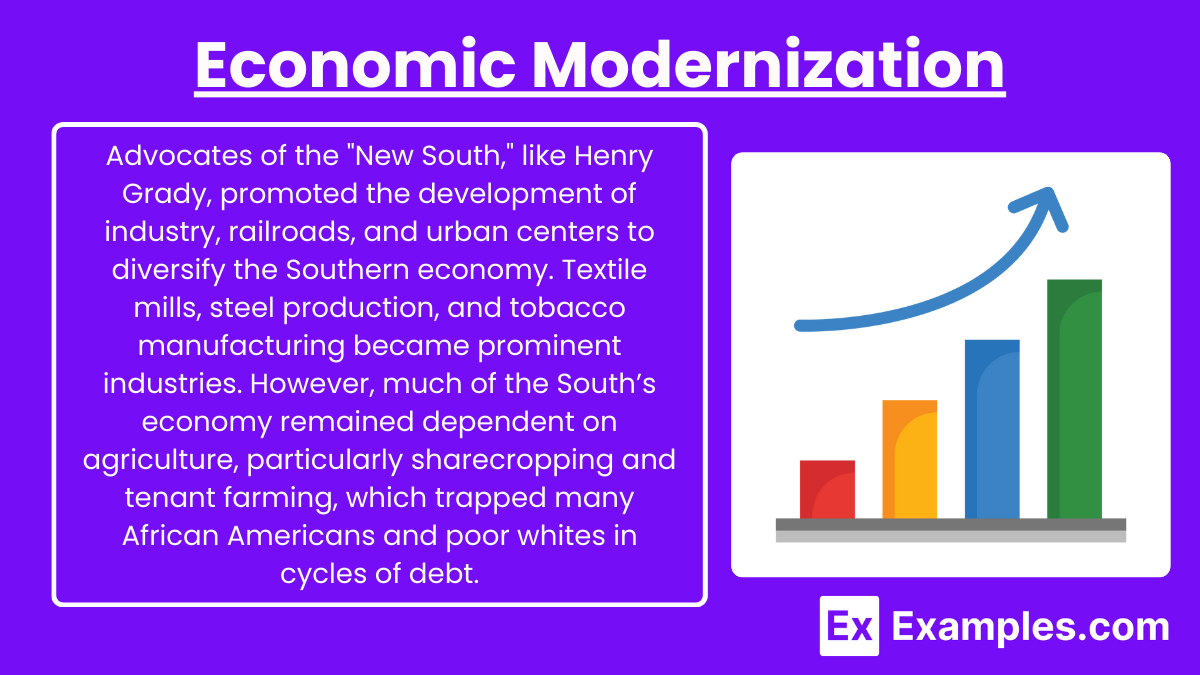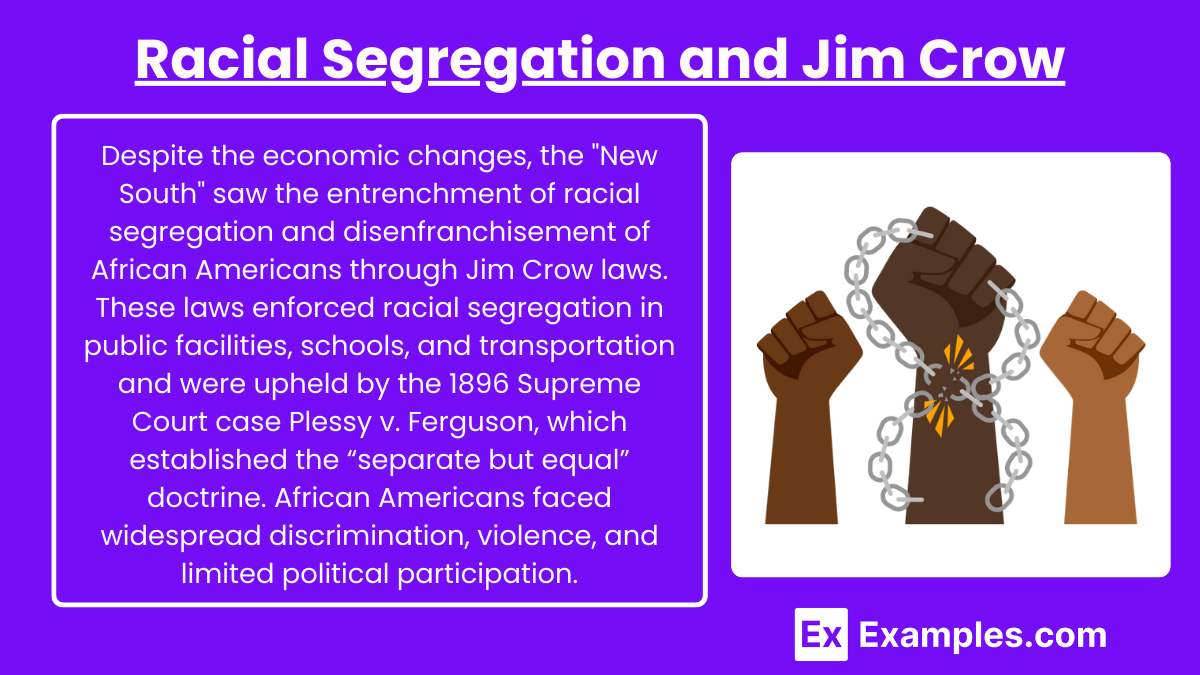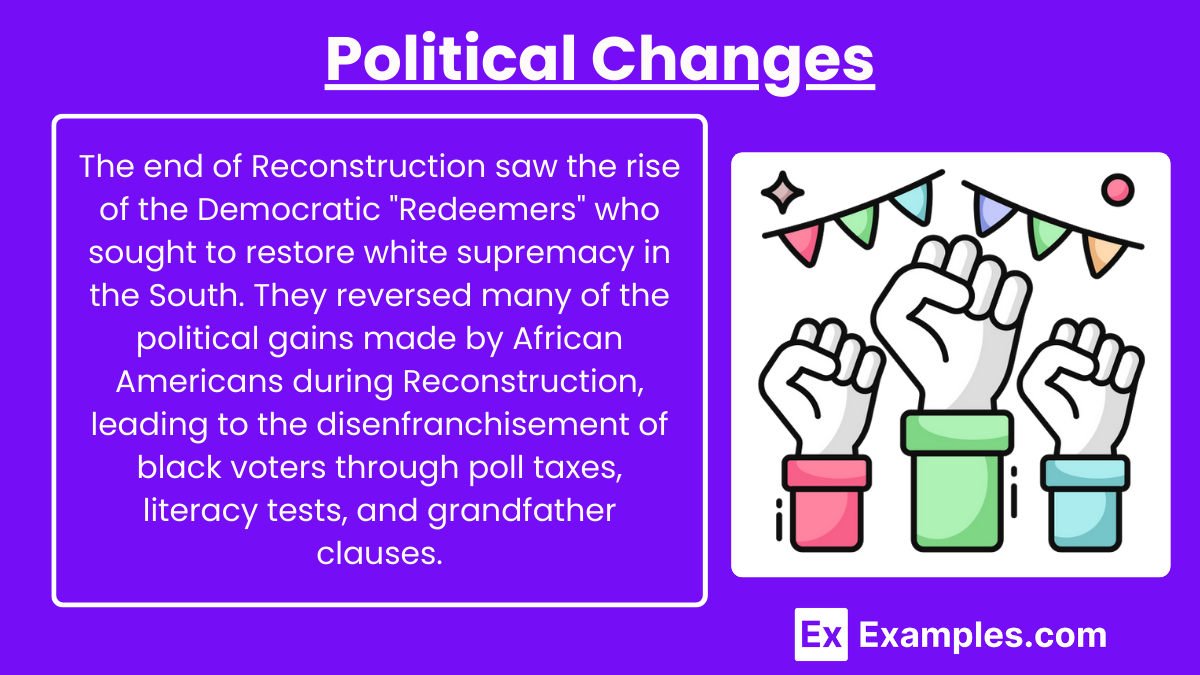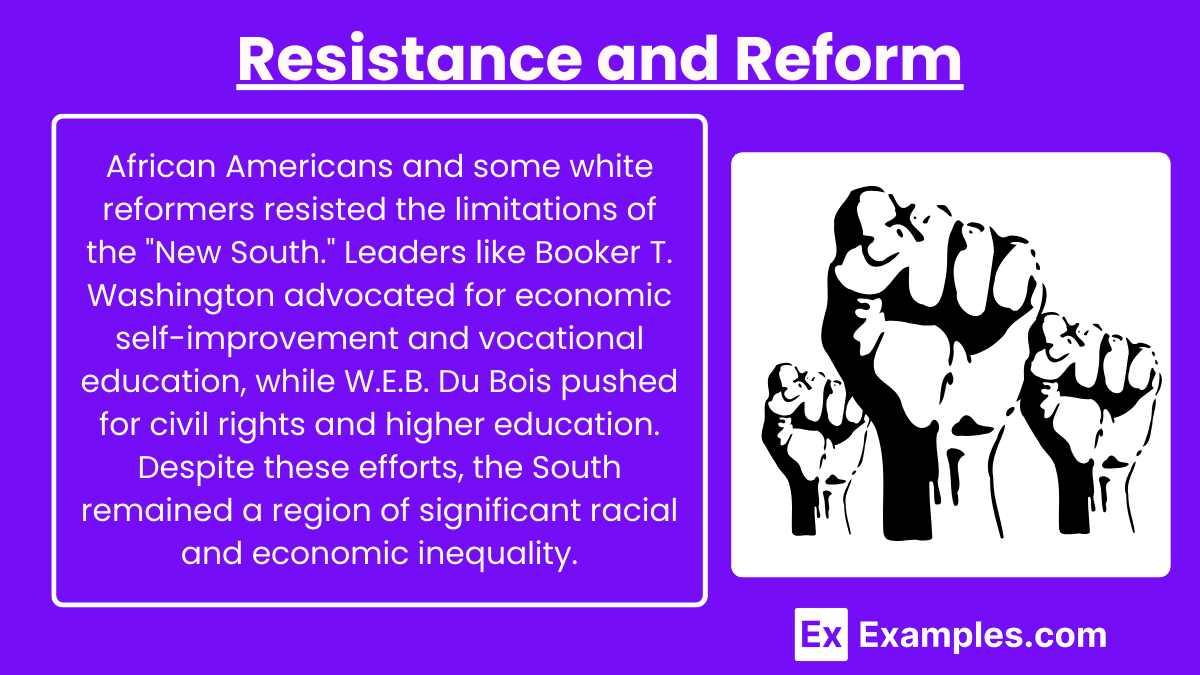In AP United States History, the “New South” refers to the post-Reconstruction era when Southern leaders sought to transform the region from an economy based on slavery and agriculture to one focused on industry, commerce, and modernization. Despite efforts to industrialize and diversify, the South remained largely agrarian, with the legacy of slavery continuing through sharecropping and tenant farming. The period also saw the rise of Jim Crow laws, institutionalizing racial segregation and disenfranchising African Americans.
Learning Objectives
The learning objectives for the topic “The New South” will include the ability to analyze the economic, social, and political changes in the South following Reconstruction. You will be expected to evaluate the efforts to industrialize and modernize the region, the continued reliance on agriculture, and the impact of Jim Crow laws on racial segregation and disenfranchisement. Additionally, you will be required to understand the resistance to these changes and the long-term effects on Southern society and the broader United States.
Key Concepts
Economic Modernization

- Advocates of the “New South,” like Henry Grady, promoted the development of industry, railroads, and urban centers to diversify the Southern economy. Textile mills, steel production, and tobacco manufacturing became prominent industries. However, much of the South’s economy remained dependent on agriculture, particularly sharecropping and tenant farming, which trapped many African Americans and poor whites in cycles of debt.
Agriculture and Sharecropping

- While there were calls for industrialization, the South’s economy continued to rely heavily on agriculture, particularly cotton. Sharecropping and tenant farming replaced slavery as the dominant labor system, often leaving workers in poverty. The crop-lien system further entrenched economic disparities, as farmers borrowed against future crops, leading to debt.
Racial Segregation and Jim Crow

- Despite the economic changes, the “New South” saw the entrenchment of racial segregation and disenfranchisement of African Americans through Jim Crow laws. These laws enforced racial segregation in public facilities, schools, and transportation and were upheld by the 1896 Supreme Court case Plessy v. Ferguson, which established the “separate but equal” doctrine. African Americans faced widespread discrimination, violence, and limited political participation.
Political Changes

- The end of Reconstruction saw the rise of the Democratic “Redeemers” who sought to restore white supremacy in the South. They reversed many of the political gains made by African Americans during Reconstruction, leading to the disenfranchisement of black voters through poll taxes, literacy tests, and grandfather clauses.
Resistance and Reform

- African Americans and some white reformers resisted the limitations of the “New South.” Leaders like Booker T. Washington advocated for economic self-improvement and vocational education, while W.E.B. Du Bois pushed for civil rights and higher education. Despite these efforts, the South remained a region of significant racial and economic inequality.
Examples
- Henry Grady: A journalist and orator who championed the “New South” movement, advocating for industrialization and economic diversification in the South.
- Textile Mills: The growth of textile mills in states like Georgia and North Carolina symbolized the South’s industrial aspirations, though the region remained largely agrarian.
- Jim Crow Laws: These laws institutionalized racial segregation, disenfranchisement, and inequality across the South, shaping social relations for decades.
- Plessy v. Ferguson (1896): The Supreme Court ruling that upheld racial segregation under the “separate but equal” doctrine, legitimizing Jim Crow laws.
- Booker T. Washington: Prominent African American leader who advocated for vocational education and economic self-reliance as a means of improving the lives of black Southerners.
MCQs
- What was the primary economic goal of the “New South” movement?
- A) To expand cotton production
- B) To develop industry and diversify the economy
- C) To restore the plantation system
- D) To increase foreign trade
- Answer: B) To develop industry and diversify the economy
- Explanation: The “New South” movement aimed to shift the Southern economy from its reliance on agriculture to one based on industry, railroads, and urban development.
- Which of the following upheld the legality of racial segregation under the “separate but equal” doctrine?
- A) Brown v. Board of Education
- B) The Civil Rights Act of 1875
- C) Plessy v. Ferguson
- D) The 15th Amendment
- Answer: C) Plessy v. Ferguson
- Explanation: The 1896 Supreme Court case Plessy v. Ferguson upheld racial segregation under the “separate but equal” doctrine, legitimizing Jim Crow laws across the South.
- What was the effect of sharecropping on the Southern economy during the “New South” period?
- A) It led to economic prosperity for African Americans
- B) It promoted the development of large industrial cities
- C) It trapped many African Americans and poor whites in cycles of debt and poverty
- D) It eliminated the need for agricultural labor
- Answer: C) It trapped many African Americans and poor whites in cycles of debt and poverty
- Explanation: Sharecropping and tenant farming replaced slavery as the dominant labor system in the South, often leaving workers indebted and economically disadvantaged.


